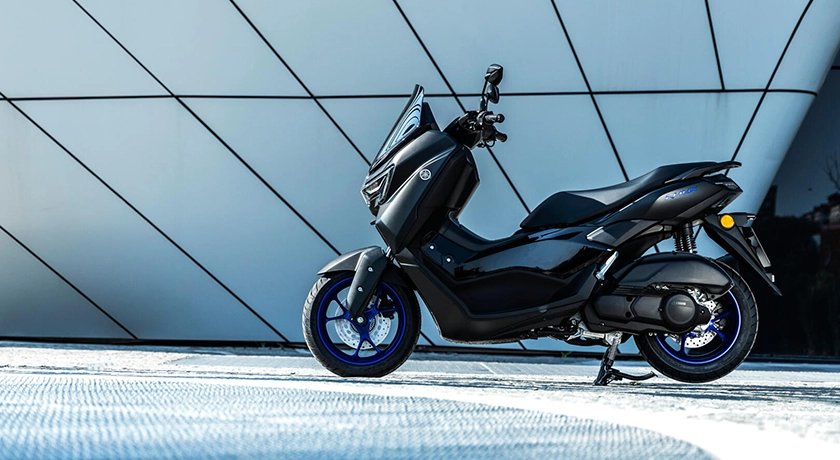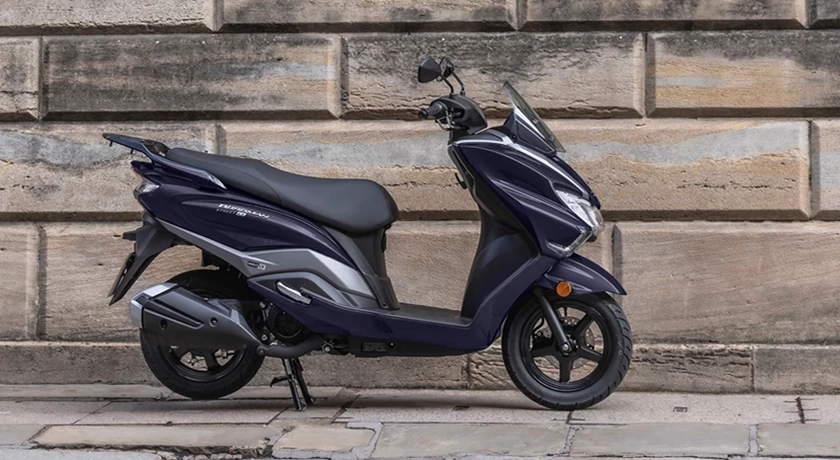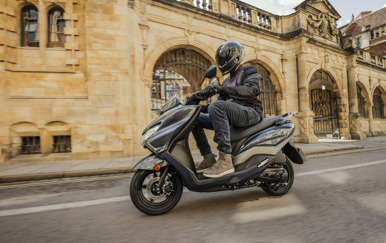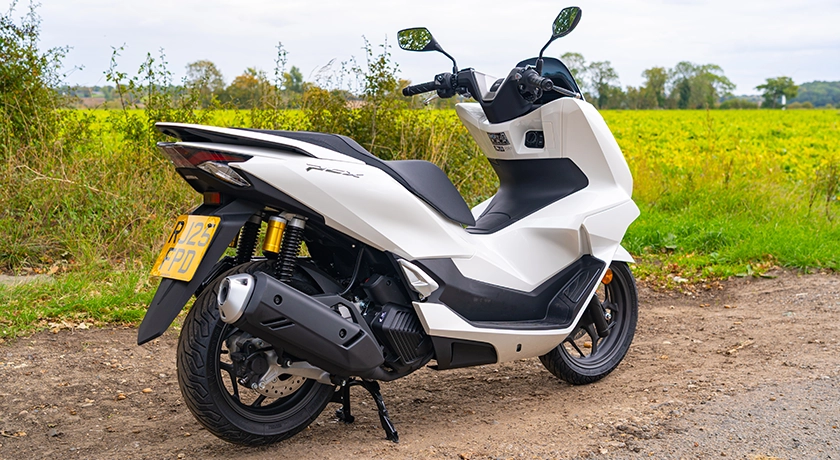
This is the all-new Honda PCX125 DX, the best-selling scooter of this year so far, but does this new and updated model justify its £3,799 price tag and remain as good as the sales figures suggest?
What’s new on the Honda PCX?
For 2025, the UK market will only get the DX variant, which comes with a host of new upgrades. The biggest upgrade is the 5” TFT display with phone connectivity, which sits alongside revised bodywork, upgraded suspension, an all-new disc brake on the rear for the first time and a USB-C socket too.
2025 Honda PCX Engine & Fuel Tank
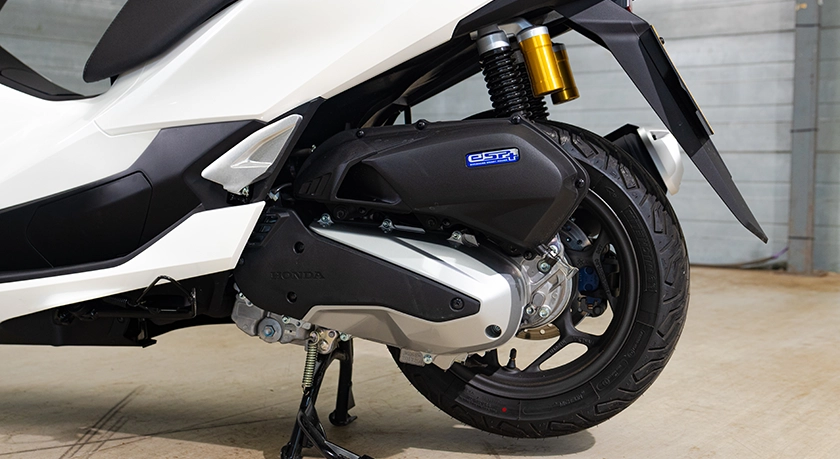
Remaining largely unchanged, the 125cc liquid-cooled single cylinder makes exactly the same 12.3hp and 11.7nm of torque as last year’s model, but being honest, why change something that doesn’t need fixing?
It’s also paired with the standard CVT twist-and-go gearbox, stop-start technology to save fuel and ultimately achieves up to 134mpg. When you pair this to the small 8.1L fuel tank, amazingly, you can get up to 239 miles on a full tank or 112 miles for a fiver according to Honda. Impressive stuff.
It also comes with Honda Selectable Torque Control (HSTC), which is a fancy way of saying traction control. If you’re not a fan of this, though, then a rocker switch on the left switchgear quickly turns this off.
Honda also states it’ll do 61mph max, but on a short run on the dual carriageway with a slight tailwind, it flickered 70mph for a brief moment in full tucked riding position; not bad going.
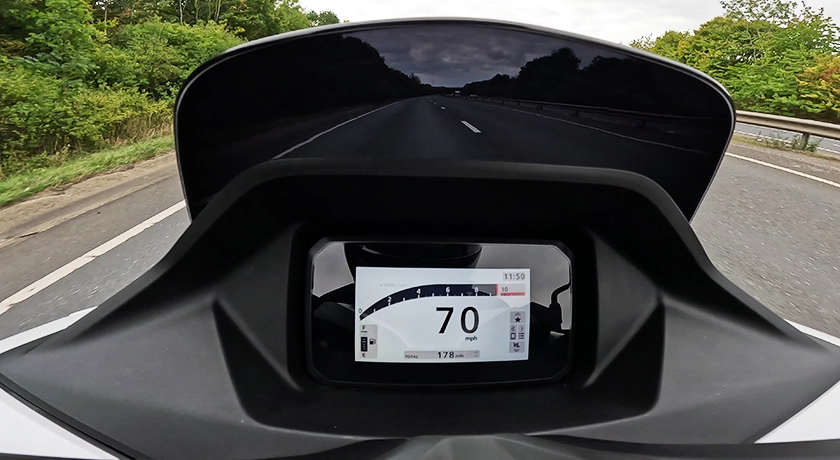
On the road, it is classic PCX. Smooth, easy-going and responsive, which is part of the reason for its success, I can assume. It’s incredibly approachable, no matter your experience, and just simply gets the job done.
Naturally, being a 125cc, it’s never going to be fast, but it appears Honda has geared the PCX for acceleration, with the spritely nature of the machine seemingly able to fly away from most other traffic at the lights, then only further aided by its sharp handling, which can zip through tight traffic with ease. It really is a delight in urban environments, and it's clear to see why so many ride it and enjoy it daily.
Honda PCX 125 Suspension, Brakes and Wheels
Now, as mentioned, the PCX handles great. Last year’s model was already brilliant, but somehow Honda has improved on that even more. Now featuring shiny gold twin gas reservoir shocks, the new PCX is sharp and can cut through traffic with absolute ease.
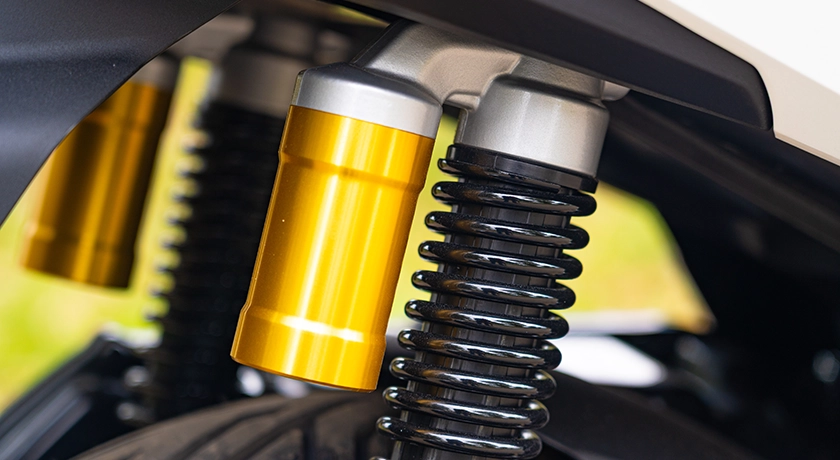
The suspension makes the PCX feel surefooted, stable and incredibly responsive. This is only further helped by its low 134kg kerb weight, of course, but as a package, the only thing I can say is: typical Honda.
Another big update for this year is the introduction of a disc brake on the back for the first time. Previously, it was a drum setup which worked fine but never had the bite at speed or even the control you sometimes require for riding slow, either.
It’s matched in size to the front at 220mm with a single piston caliper controlling the rear and a twin piston sorting out the front.
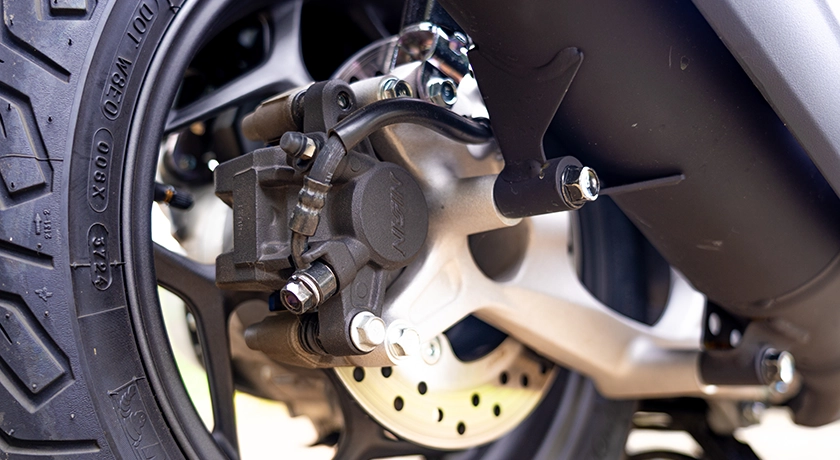
As you can imagine, these are very sharp. Bearing in mind the bike weighs a mere 134kg, I’d say they were almost too sharp in some situations, but once you get used to them, having that extra power is never a bad thing and always provides reassurance knowing you have a good portion of stopping power at a finger's reach.
Honda has also equipped the PCX with Michelin City Grip tyres, which further back up the overall handling package, inspiring confidence in a variety of situations and road conditions.
2025 Honda PCX125 DX Tech
The new 5-inch TFT is obviously the star of the show on the new PCX this year and for good reason.
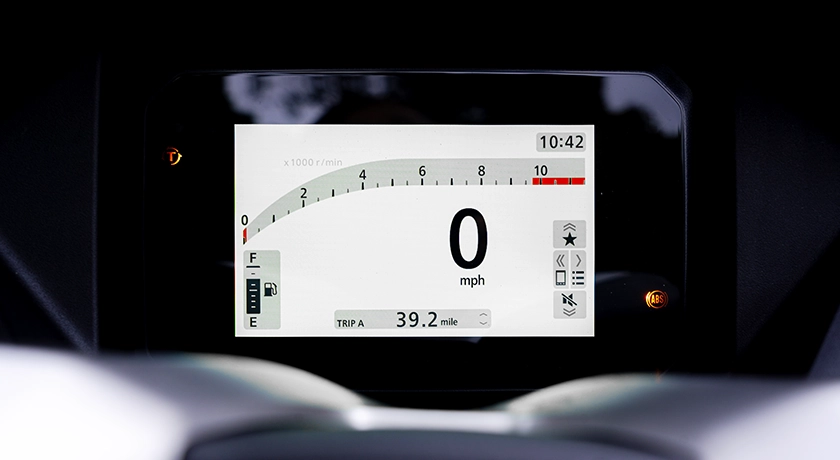
In typical Honda fashion, it was never slow, hard to see or caused any problems at all. Even the switchgear to control it is the same, with tactile buttons and switches in easy-to-reach places with a reassuring feel of quality about them.
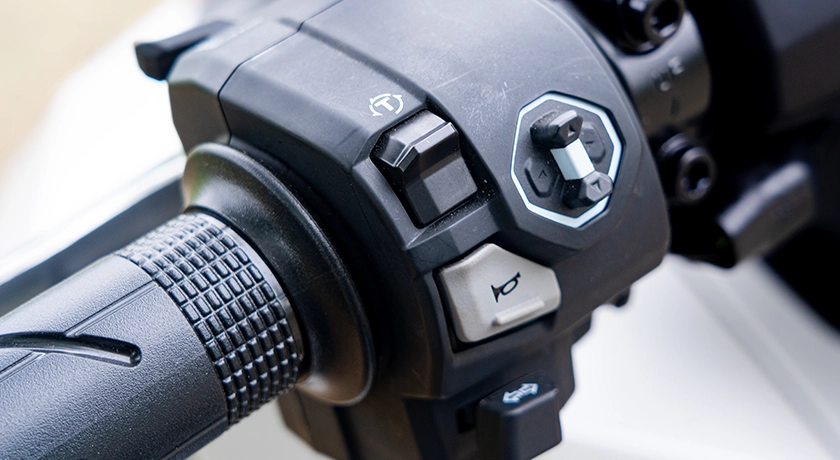
The auto brightness and auto light and dark mode features are brilliant and proved very responsive to changes in lighting conditions, and let’s not skip just how large that speedo display is, allowing you to monitor your speed at all times more easily. Little features like being able to choose the style of the screen are also a great way to customise it just how you like it.
It also features Honda’s RoadSync technology for smartphone connectivity, allowing for navigation, calls, messages, music and even the weather! The addition of in-built navigation is a good security feature in my opinion, as you don’t need your phone mounted out in the open, exposed and potentially at risk of theft if you’re using the PCX for its intended purpose of inner-city riding.
As before, we still get a smart key, which operates the ignition, fuel cap and seat opening too, making the PCX even more convenient for busy environments alongside a little USB-C socket too hidden away in the front glovebox.
2025 Honda PCX 125 Storage
Of course, one of the most important factors of any scooter or moped is how much you can stuff under the seat. A modern full-face helmet is typically too much to ask for on a lot of models nowadays, like the Vespa Primavera 125 we recently had in for review, for example, but the PCX is different.
With 30.4 litres to offer under its very low 763mm seat, it swallowed my AGV K3 full face helmet with ease, as well as having extra space leftover too. A great feature if you want to use the PCX as a daily commuter.
This is also alongside a deep, but narrow front glovebox and an optional smart top-box available at extra cost, which unlocks through the smart key. I was impressed with the storage capacity on the PCX; specifically, how easy it was to live with. It’s nice to be able to get somewhere and not have to carry your lid about, so plus points to the Honda here.
Looks and Styling on the new PCX
With the revised bodywork for 2025, the new PCX looks sharper than ever. Still distinctively PCX but more angular, and I personally think the upgrades to the front headlight and rear tail light have greatly improved the overall look, making it just that extra little bit more modern and futuristic.
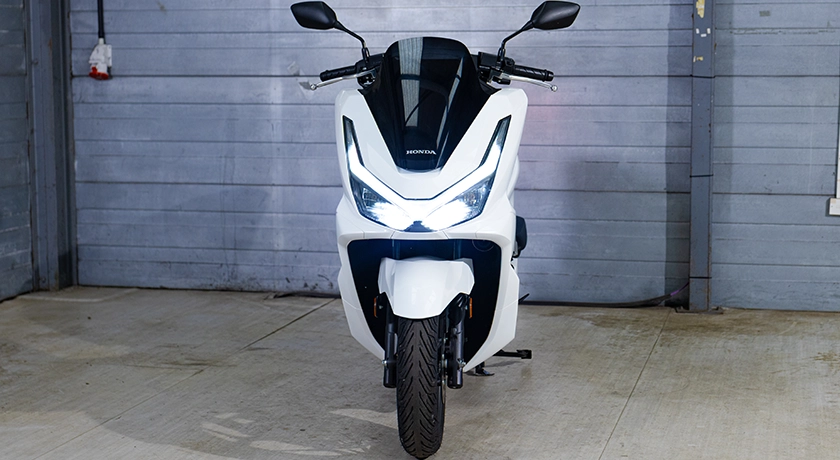
The shiny gold rear shock reservoirs also give this new PCX more of a premium look, I think, and always stand out no matter your colour choice, even on this more muted pearlescent white paint on our model.
The addition of the plastic trim on the handlebars is also either a good thing or a bad thing for you, too. I personally love it and feel it fits the futuristic style of the bike much, much better than before. Still, I also understand the argument from some riders that it’s no longer as easy to mount accessories like your phone holder, for example.
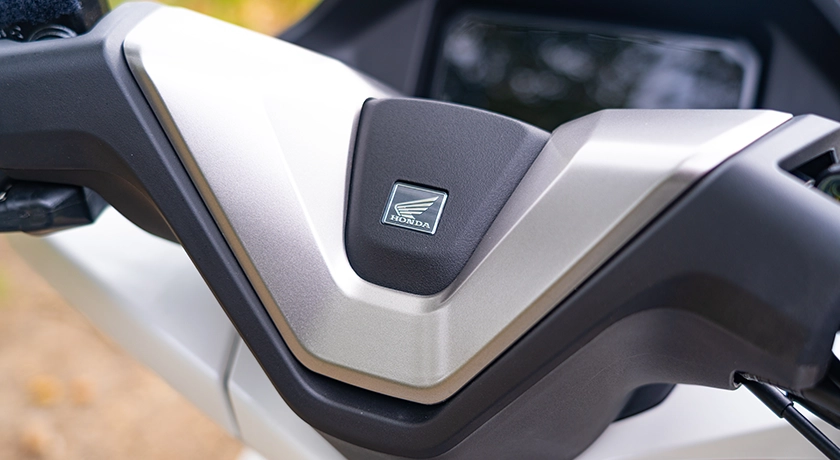
If you like the look of the 2025 Honda PCX125 but aren’t quite sure it’s right for you, then the Yamaha NMAX 125 and Suzuki Burgman Street 125EX might be worthy alternatives.
The NMAX has a very similar power output to the PCX, with 12.1hp compared to the Honda’s 12.3hp. Torque is slightly lower at 11.2Nm versus 11.7Nm, but it comes in a little earlier in the rev range. It’s also a bit lighter at 132kg compared to the PCX’s 134kg.
The seat height is almost identical at 770mm vs the 763mm on the PCX, but the fuel tank is smaller at 7.1 litres. The NMAX also features a 4.2-inch LCD dash with smartphone connectivity, while the PCX offers a full colour TFT display with Honda RoadSync.
Pricewise, the NMAX is about £200 cheaper, coming in around £3,600 depending on the spec, but if you’re still undecided, then you can check out our PCX vs NMAX spec battle on the Lexham Blog.
Alternatively, the Suzuki Burgman Street 125EX could be a worthy alternative. It does, however, have a lower power output at 8.5hp and a lower torque output of 10Nm, so it won’t match the PCX for performance. But it’s much lighter at 112kg and has a slightly higher seat height of 780mm. The fuel tank is smaller again at 5.5 litres and also only comes with a basic LCD dash, smaller 12-inch wheels, and front disc with rear drum brakes, whereas the PCX runs bigger wheels and discs front and rear with a TFT display.
It’s not all negative, though, as the Burgman is the most affordable of the three, starting at just under three grand, which is roughly £800 cheaper than the PCX.
My Verdict
So, with the new updates for 2025, is the PCX as good as it’s always been? I would say yes. There’s a reason it’s the best-selling scooter of this year so far, and this new DX version only improves on that.
The TFT is intuitive, bright and easy to see, and the brakes are now almost too sharp! I also think the revised bodywork looks great, too.
Overall, I can fully see why this is the best-selling scooter. In true Honda style, it’s not particularly flash, although it has some pretty trick equipment. Still, it simply gets the job done, day in, day out, for many riders across the country and beyond, and this new model is more of a refinement than a total refresh, and for that, I think Honda has pretty much nailed it.
Pros
-
Competitive Price
-
Bright and Intuitive TFT Display with Navigation
-
Michelin Tyres
-
30.4L of Under Seat Storage
Cons
-
The new plastic handlebar covering looks great, but makes mounting accessories more difficult
-
Keyless Ignition – Whilst it works well, I personally prefer the almost guaranteed reliability of a physical key
The Final Stop!
If you’ve enjoyed this review and plan to get your hands on your very own PCX, or maybe if you have one already and need somewhere to insure it, don’t forget to head to Lexham direct to get your scooter insurance quote today!

